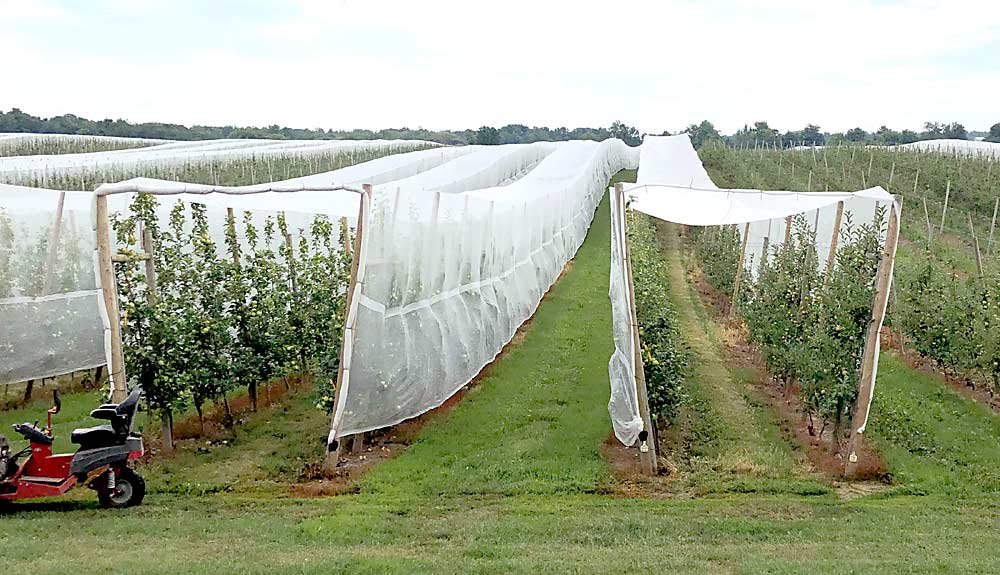
Like a lot of New York apple growers, Paul Wafler was curious about drape netting, a type of hail netting that wraps around tree rows rather than stretches above them, adding bird control benefits. But Wafler’s Wayne County orchard features unique trellis systems, so after some trial and error, he decided standard drape netting wasn’t going to do the job.
With some modifications from Drape Net, an Australia-based company that sells drape netting, Wafler figured out how to stretch the nets over two rows, still protecting the trees but leaving convenient aisle access for workers. Now, he wouldn’t have it any other way.
“If we just throw a standard drape net over a standard tree the way other growers are doing, we would not continue on with it,” he said. “There’s too much surface area too close to the tree.”
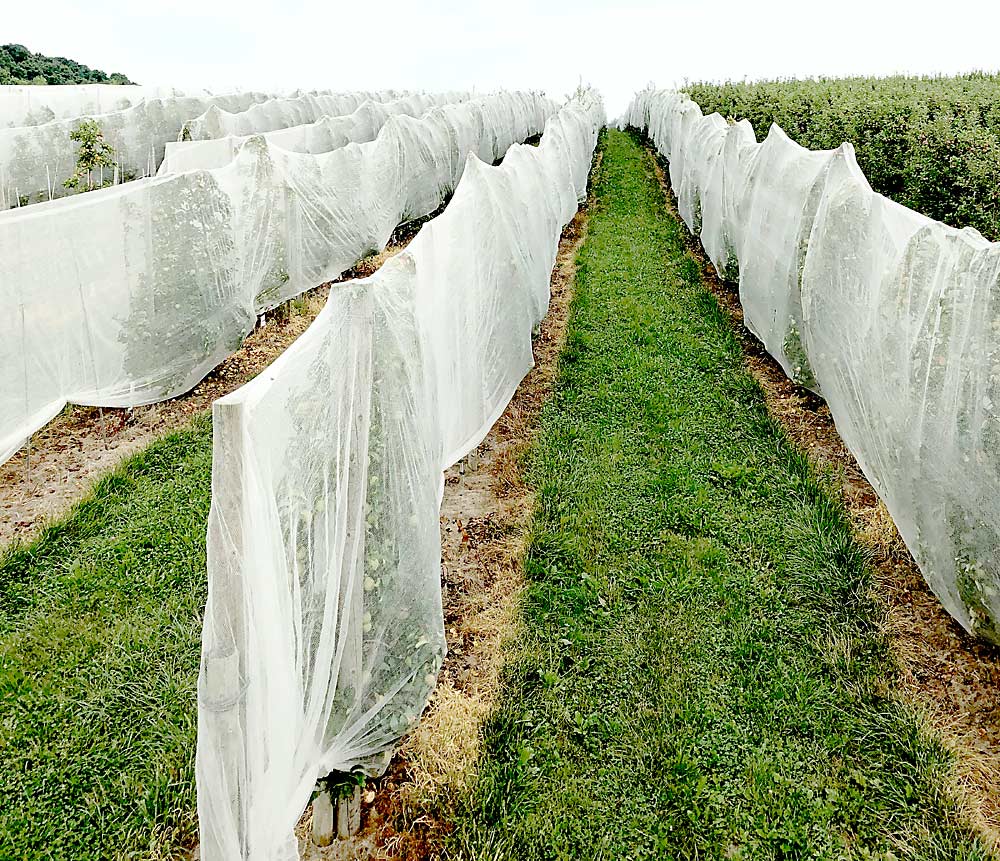
Mario Miranda Sazo, an extension specialist with Cornell University’s Lake Ontario Fruit Program, is intrigued, but not yet sold on the benefits of drape netting. He said uncertainties about netting’s potential effects on fruit coloring, maturity and quality require more study.
Miranda Sazo has been studying drape netting and reflective fabric in combination at Cherry Lawn Farms in Wayne County, near the southern shore of Lake Ontario. He and other Cornell researchers first started trialing netting in 2018. Miranda Sazo has been studying its effects on Minneiska, while Lake Ontario Fruit Program leader Craig Kahlke and business management specialist Mark Wiltberger have been studying its effects on Honeycrisp and Fuji at Wayne County’s Donald DeMarree Fruit Farm.
The Cornell specialists went with drape netting because New York growers had seen it in action before, including during an International Fruit Tree Association tour of New Zealand, and wanted to learn if it was practicable in their state.
The researchers included reflective fabric in the trials. (See related story: Apple coloring improves on further reflection.) The fabric’s benefits on fruit coloring were immediately obvious, but the disadvantages of netting — including higher costs and additional labor — need to be studied in greater detail, Miranda Sazo said.
“I’m a strong supporter of fabrics,” he said. “But I want to take a different approach about nets. I want to slow down and figure out what’s going on in the canopy below the nets. We need to see the fruit quality in more detail.”
In the 2018 Honeycrisp and Fuji trial, the netting did not delay apple maturity, but it did noticeably reduce fruit color, Kahlke said.
Another disadvantage of drape netting is that you can’t see the trees, or fruit, clearly, said Alison DeMarree, co-owner of the farm that hosted Kahlke’s trial. The DeMarrees hand-thinned their trees in 2018, but not as thoroughly as they should have. They didn’t realize their error until it was too late, however, because they couldn’t see how much fruit was on the trees.
“Once you put netting up, you can’t see how much fruit is in there,” she said.
Early adopters
Drape netting is not yet widespread in New York, but there are plenty of growers waiting to see how the early adopters fare before jumping in themselves, said Helen Giroux-Taylor, co-owner of Chazy Orchards, in the far northeast corner of the state.
Giroux-Taylor, one of those early adopters, is also the East Coast sales manager for Drape Net North America. After she, her father and uncle bought their orchard a decade ago, hail damaged their fruit four out of the first six years. Seeking a solution, they got in touch with Michael Cunial, founder and owner of Drape Net.
After seeing the netting in action in New Zealand a few years ago, they decided to order 50 acres’ worth. They liked the product so much that Cunial asked them if they wanted to be his North American distributor.
Chazy Orchards now covers about 200 acres of apples with drape netting. The orchard hasn’t been hit with hail since it started using nets, but the nets have already paid for themselves, thanks to the insect and bird control they’ve provided, she said.
Chazy Orchards uses drape netting in the standard style, wrapping it tightly around a row of trees. They install the nets after petal fall — usually late May or early June — and don’t remove them until just before picking. If treated properly, drape nets can last 10 years. They place reflective fabric under about 10 percent of the nets to help with coloring, Giroux-Taylor said.
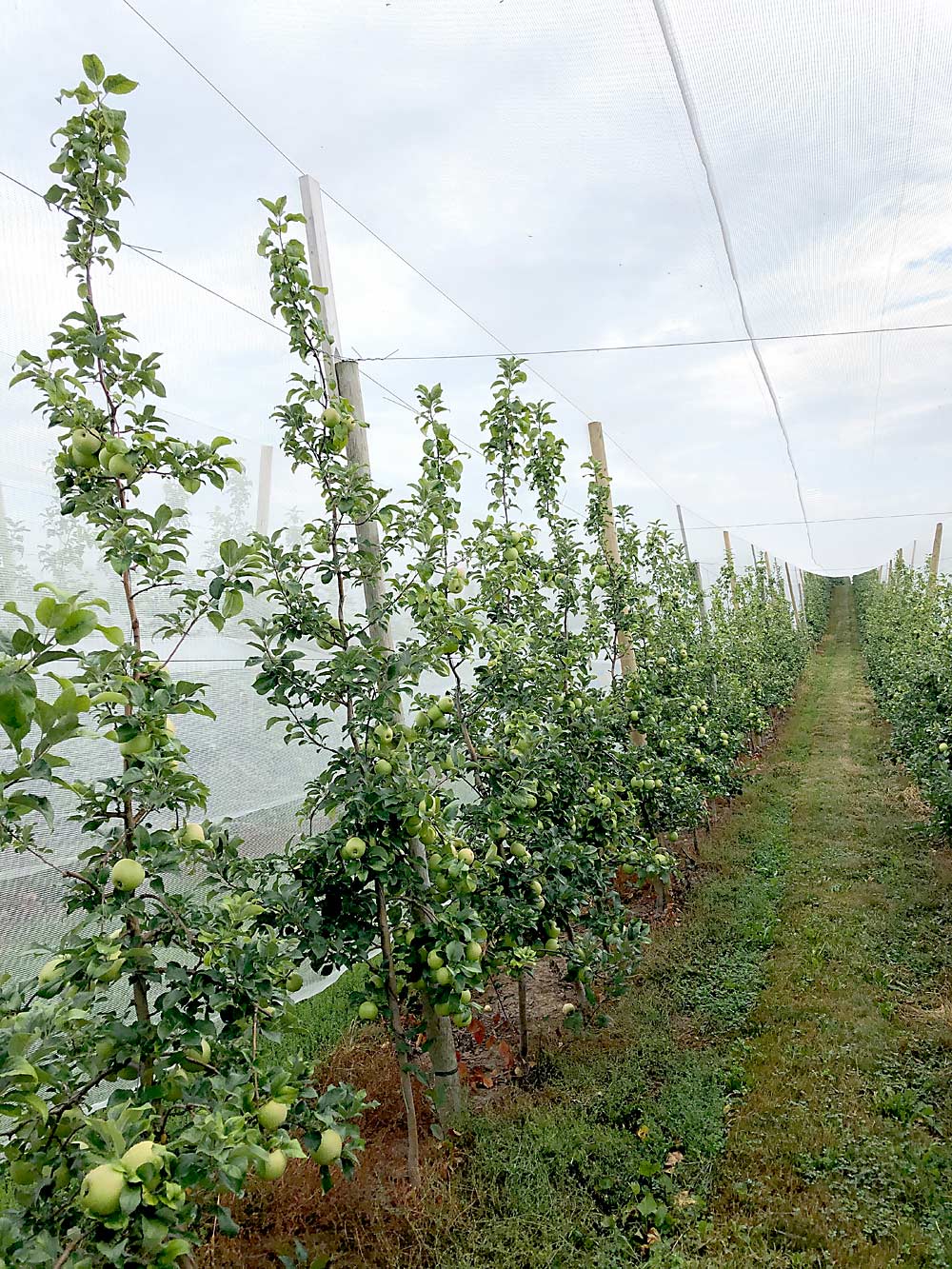
Wafler, another early adopter, now covers 150 acres of apples with his modified drape netting, and plans to cover all his newly planted orchards in the future.
Wafler uses what he calls a “narrow wide,” or “tall spindle tip” growing system. In this system, the apple trees are planted 3 feet apart, in alternating rows of 13 feet and 7 feet. The trees on either side of the wide rows are tipped inward, so the tops are 10 feet apart in each row. He did this to create greater efficiencies, especially for platform picking, but covering this system adequately with drape netting was a challenge.
Wafler’s modified system, which covers two rows with a single net, allows workers to walk in between rows and perform horticultural tasks without having to unlock or move parts of the net. It uses less material than the standard method, too, and therefore costs less.
Crews install the nets after petal fall and take them down right before harvest. They use reflective fabric and film underneath. For removal, they roll up the netting, wrap a protective cover around it and place it at the end of the row — all by machine. They used to store the netting in buildings in the off-season, but that was too much work, he said.
The netting itself costs about $3,000 per acre. Beefing up trellises to hold the netting — which “acts like a sail” in high winds, threatening to take the trees down with it — is an additional cost. It’s more labor-intensive, too, Wafler said.
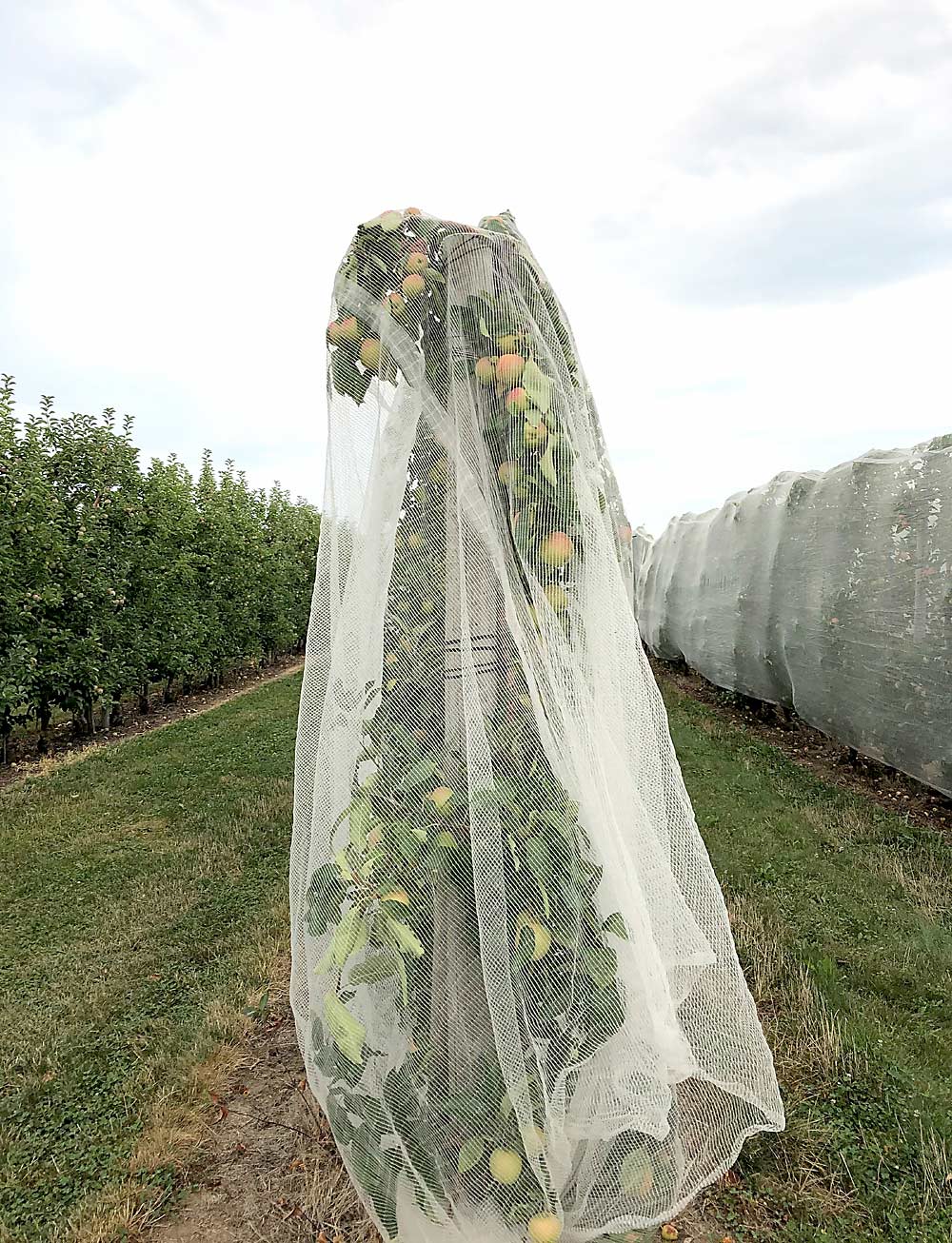
But netting’s effects on bird control are “unbelievable,” he said, especially for profitable varieties such as Honeycrisp. The big apple-damaging birds, such as crows and ravens, won’t fly under the nets, even though they’re not wrapped as tightly around the trees as is standard drape netting.
Wafler said that after three years, the netting has easily paid for itself — even though it has yet to fulfill its main purpose: His orchard hasn’t experienced a hailstorm since he started putting nets up.
“This might sound stupid, but I truly want a devastating storm to come and hit at least part of our acreage,” Wafler said. “We still haven’t proven this will hold up in a severe storm.” •
—by Matt Milkovich

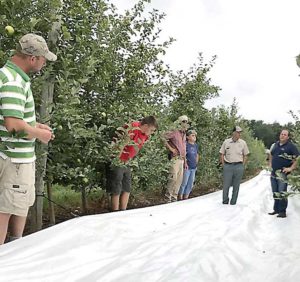
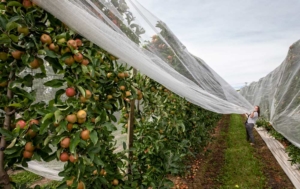





Leave A Comment